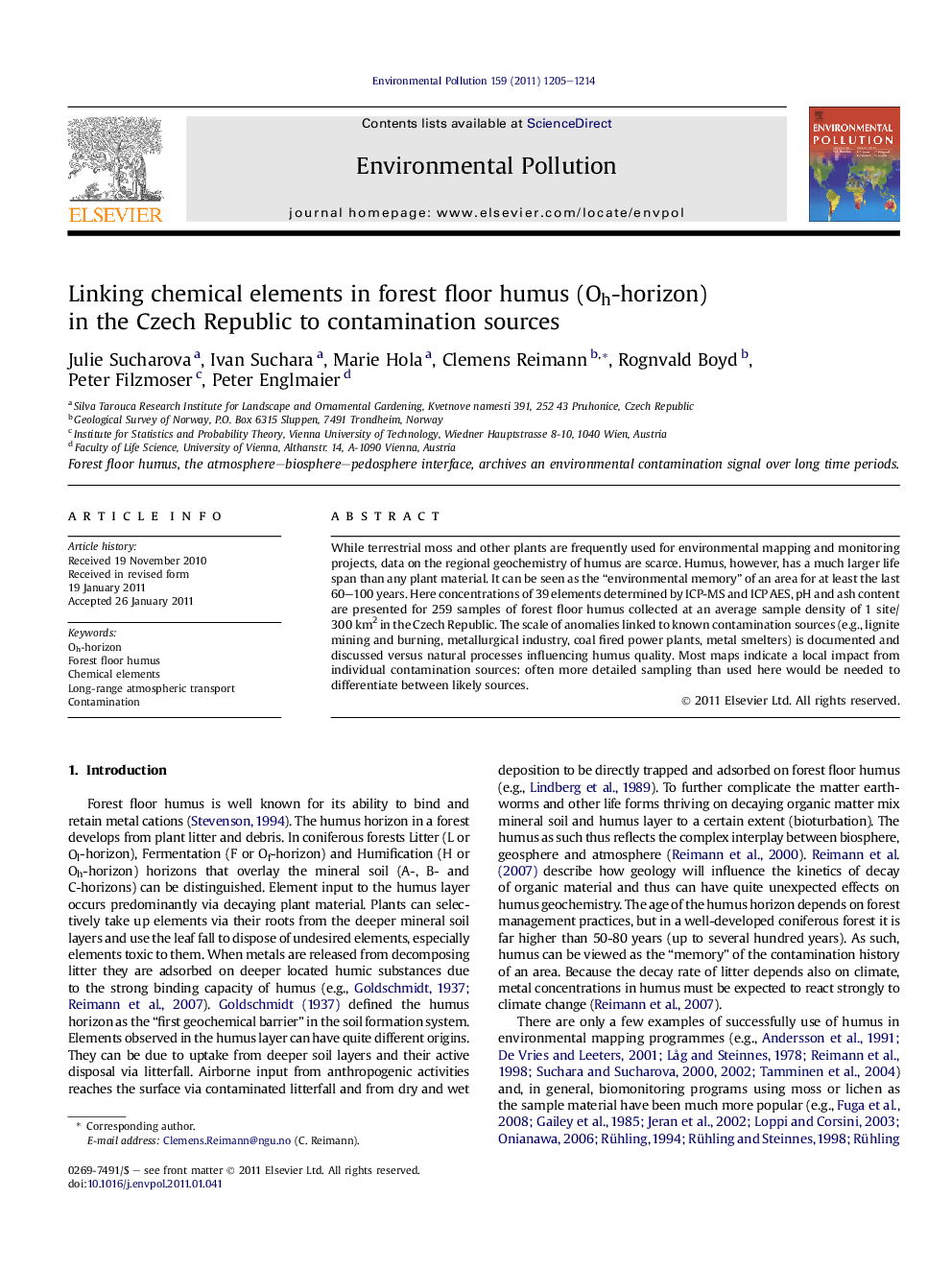| Article ID | Journal | Published Year | Pages | File Type |
|---|---|---|---|---|
| 4425450 | Environmental Pollution | 2011 | 10 Pages |
While terrestrial moss and other plants are frequently used for environmental mapping and monitoring projects, data on the regional geochemistry of humus are scarce. Humus, however, has a much larger life span than any plant material. It can be seen as the “environmental memory” of an area for at least the last 60–100 years. Here concentrations of 39 elements determined by ICP-MS and ICP AES, pH and ash content are presented for 259 samples of forest floor humus collected at an average sample density of 1 site/300 km2 in the Czech Republic. The scale of anomalies linked to known contamination sources (e.g., lignite mining and burning, metallurgical industry, coal fired power plants, metal smelters) is documented and discussed versus natural processes influencing humus quality. Most maps indicate a local impact from individual contamination sources: often more detailed sampling than used here would be needed to differentiate between likely sources.
► Concentrations of 39 elements in forest floor humus are provided. ► The capabilities of humus sampling for bio-monitoring purposes are demonstrated. ► Geochemical anomalies are linked to known contamination sources. ► The study shows the importance of scale for geochemical mapping projects. ► Humus provides a picture of the long term contamination history of a country.
